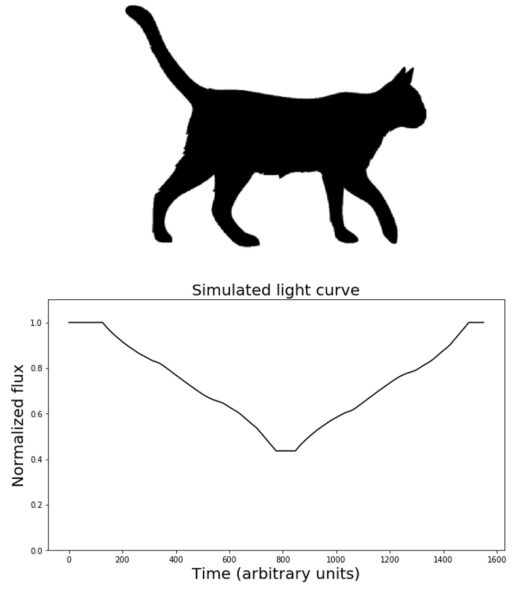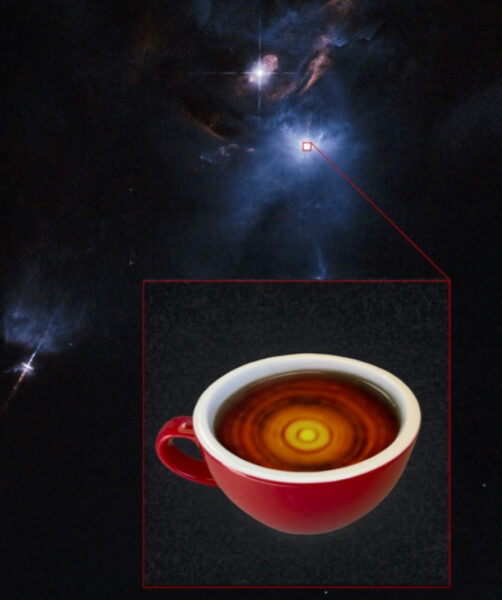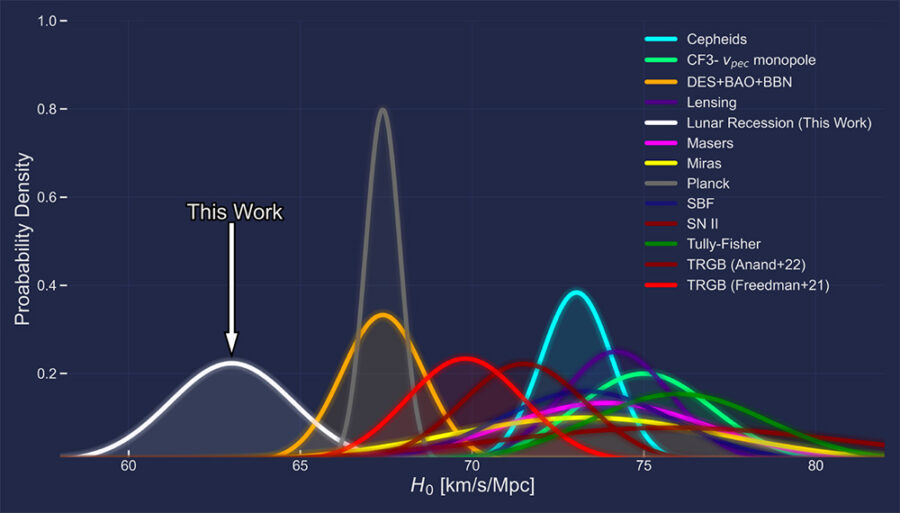Astronomers aren’t holding back this year, with brand-new submissions to this year’s highly prestigious (and fictitious) Acta Prima Aprilia.
The skills astronomers learn in critical thinking, computation, and statistical analysis have many applications outside academia, such as creating articles to submit to the prestigious (and fictitious) journal Acta Prima Aprilia, posted on the arXiv. The arXiv preprint platform is a place to share scholarly studies in all stages of development. Thus, a tradition has emerged whereby academics with a quirky sense of humor and a few free hours take to the arXiv every April 1st to post some long-form inside jokes. Here is a brief selection from this year’s offerings:
First Detections of Exop(lan)ets: Observations and Follow-Ups of the Floofiest Transits on Zoom

S. Sagynbayeva et al. / Acta Prima Aprilia
Everyone loves space. But do you know what people love more? Pets. Put these subjects together and you get the best PR campaign for astronomy since the space race. Exopets is a direct descendent of last year’s viral April Fool’s piece, “Detection of Rotational Variability in Floofy Objects at Optical Wavelengths.” And because it's against astronomical law to write a paper without mentioning how the JWST might advance the author’s aims, Exopets’ conclusion references it, saying: “We eagerly look towards the day that new exopets are identified with this flagship mission.”

S. Sagynbayeva
Taurine in Taurus. An Over-Caffeinated Search for Coffee in Space

C. Eistrup et al. / Acta Prima Aprilia 2022
This paper discusses something else beloved of people around the world, but especially night-owl astronomers: coffee. The authors found themselves inspired one day after an overindulgence in the aforementioned brew and constructed a curious new instrument: the Large Astrocomical Taurine Tester Experiment (LATTE). When they pointed it at the young star HL Tau, they found “an abundance of taurine gas beautifully outlining a cup of cosmic flat white.” Independent investigations are needed to verify these results, but there are many takers. LATTE may turn out to be more oversubscribed than JWST!
Worry No More, The Hubble Tension is Relieved: A Truly Direct Measurement of the Hubble Constant from Mooniversal Expansion

Acta Prima Aprilia
This surprising paper purports to have made “the first ever model-independent, single-step measurement of the Universe's current expansion rate.” Unlike traditional distance-ladder methods, which use consecutive measurements of supernovae, lensed quasars, and other objects, the authors looked closer to home, at the recession of the Moon as it orbits Earth. They grant that their measurement of the Hubble constant (H0 = 63.01 ± 1.79 km/s/Mpc) is somewhat lower than the value measured by the Planck satellite. Nonetheless the authors are reportedly “enthralled to report this very significant result, which is definitely not a joke.”
COWS all tHE way Down (COWSHED) I: Could cow based planetoids support methane atmospheres?
Who hasn’t wondered how many cows it would take to form a planetoid entirely composed of cows? Obviously, this topic has broad interdisciplinary and cross-cultural appeal. But here, the authors get a bit more detailed than your typical bovine thought experiment, asking the big questions, such as whether “cows are sufficiently intelligent to organize themselves and obtain a perfect bovine packing fraction of unity.”
The Three Little Pigs and the Big Bad Wolf: Case Studies of Peer Review
Peer review is the method by which academics vet other academics’ work before publication. The goal is to make sure the community has access to a high-quality body of literature. The current system has its faults, but it works all right and moreover, it’s highly entrenched. There are those who advocate for improved methods, and more anarchic types who think the whole system should be chucked altogether. Most academics simply try to work within the system. This paper tells a metaphorical tale that will be painfully familiar to any academic who has found themselves and their life’s work “in the jaws of the wolf.”
We’ll close with this offering from amateur astronomer Stuart Atkinson (@mars_stu), who posted this incredible, rarely seen “Transit of Saturn” on Twitter early this morning. What a find!
If you haven’t had enough yet, here are some other April Fools articles we found:
- My Rhodopsin!: Why Adding Dark Mode to Journals Could Make Us All Better Astronomers
- Could fresh lava be (warm) dark matter?
- Social distancing between particles and objects in the Universe
- On the Possibility of Discovering Exoplanets within our Solar System
- Follow the Index: A new proposal
- Predicting Winners of the Reality TV Dating Show The Bachelor Using Machine Learning Algorithms
- The Parking Lot Planet
- Transmogrifiers: Bright of the Exomoon
- What's for Lunch? A systematic ordering of foods in the Soup-Salad-Sandwich phase space
 2
2









Comments
Anthony Barreiro
April 1, 2022 at 6:49 pm
Thanks for sharing this compendium of current research, and thanks especially for including the work of an amateur astronomer!
You must be logged in to post a comment.
Anthony Barreiro
April 2, 2022 at 7:42 pm
All of these arXiv articles have now been peer reviewed:
https://astrobites.org/2022/04/02/april-fools-2022/
You must be logged in to post a comment.
You must be logged in to post a comment.